First, I’ll like to thank digiZoid for the ZO2.3 sample. When digiZoid first introduced the original ZO to the market back in mid 2010, they nicknamed it the ‘personal subwoofer’ in order to give the buyer an idea of what the ZO is and how it is different from any other portable amp out there. While in retrospect the nickname does describe the function of ZO well, it did however unavoidably alienate most of the Head-fi community. A company with a name that sounds like it is from a Japanese animation series is trying to sell a little plastic toy like bass booster? It doesn’t inspire a lot of faith. Admittedly, I felt quite skeptical when I saw the ZO ads floating around the internet back then, and for almost a year there was nothing much about ZO on Head-fi. But when a few Head-fier began to experiment with ZO and reported back with really favorable result, it suddenly turned into a must-have almost overnight. Ironically, the same group of user who was turned away by the funky named device a year ago has become its biggest advocator (and I am among one of them). With the success of ZO on their belt, digiZoid began to develop a new ZO to address some of the shortcoming on the original ZO. After a few trials and errors, the ZO2.3 is born.
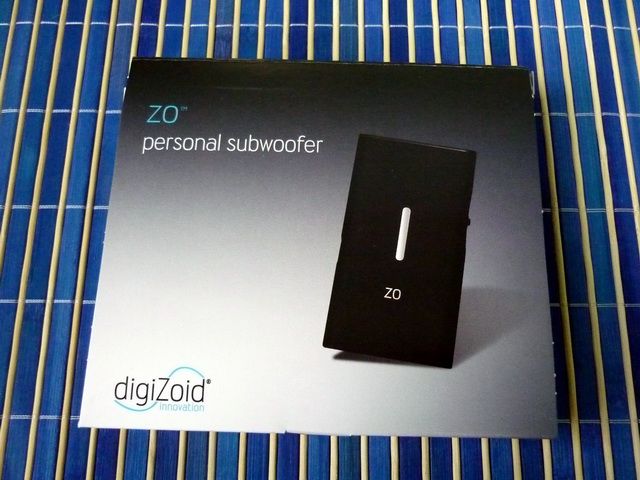
Packaging is identical to the original ZO
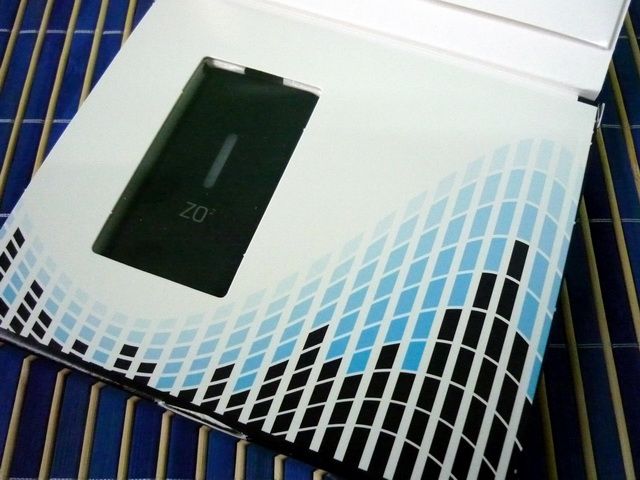
Features
*Note: The reason to list features instead of spec is because there is no detail spec (on ZO or ZO2.3) being published.
Tech Prelude
As Arthur C. Clarke once said, ‘Any sufficiently advanced technology is indistinguishable from magic’ – perhaps a poor analog to describe how digiZoid’s SmartVektor works its ‘magic’, but nevertheless it is what a good number of user seem to have felt when turning on their ZO for the first time. At least, that’s how I felt when I used my ZO for the first time. Of course, I have since, in the course of the review process, got the chance to read the patent application behind the SmartVektor technology. I am no electronic engineer nor skilled in the art to really decipher all the information within, but I do understand part of its concept. Basically, at least to my understanding, ZO is like an adjustable active bass boost circuit. Well, not much to it, isn’t it? The key word here is ‘adjustable’. Most active bass boost design employ fixed band bass boost, meaning you can’t adjust the bass boost level or the frequency range affected. By implementing an digital controlled filter into their bass boost circuit, digiZoid is able to add multi layer of different bass boost level, and thus, adding the different ‘contours’ od frequency response into their bass boost circuit. While the concept of hardware based dynamic bass boost isn’t something of new as you can see them all over desktop and car amplifier, digiZoid is able to have a design that is small and practical enough to pack all the ‘magic’ of the SmartVektor technology inside. The really smart part of the SmartVektor technology, from my point of view, isn’t on the circuit itself, but the overall implementation. It works, and you can’t argue with that even if you don’t like bass boost yourself.
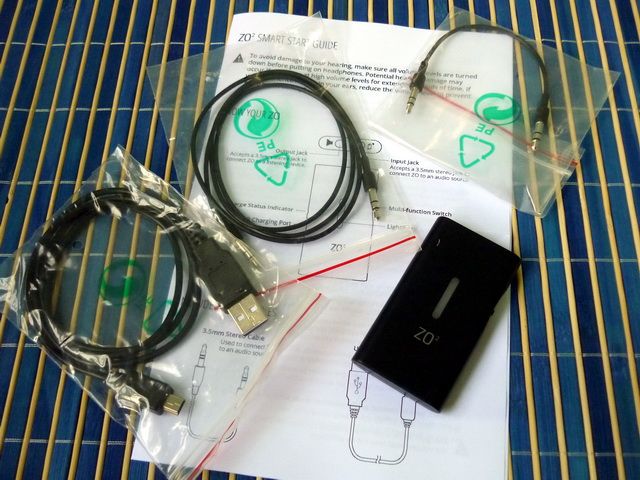
Build Quality and Accessories
The original ZO is quite decently built. It might not look as classy like an iBasso T series with its plastic housing and light weight, but the finishing is good and I have no complaint over it. The ZO2.3 uses the same design of housing, but comes with a matte rubber coating. Generally speaking I am not a fan of rubber coating as they tend not to last very long (as testament, the rubber coating on my newly acquired iBasso T5 started to come off on the first day). But surprisingly, the coating on ZO2.3 is rather well made and at least is able to resist my intentional finger scratching to a good degree. The matte finish and the added friction make ZO2.3 less toy like and more mature, to say the least. The LED based ‘LightScale’ that used to indicate volume and bass contours is also much brighter and vivid than the original ZO. On physical build alone, I have to say ZO2.3 indeed looks and feels better than the original ZO.
Accessories wise, there are two 3.5mm interconnecting cable and an USB cable for charging - nothing remarkable to speak of. I do wish digiZoid would pack a semi-large soft pouch as well. Not only it can used to store ZO when not in use, but also serves as a storage bag for ZO and its source (assuming a DAP of small size).
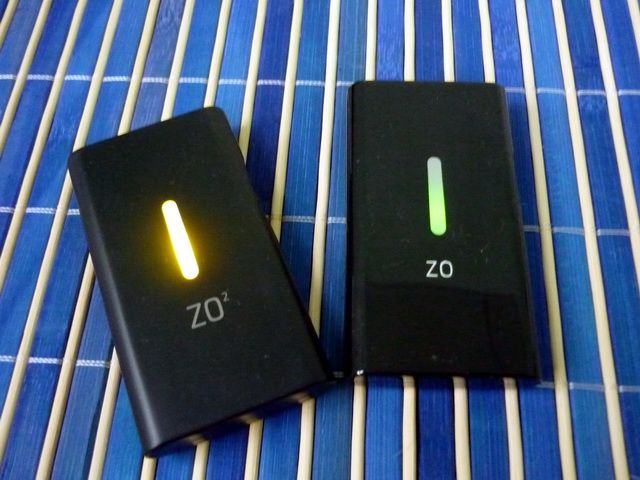
The LightScle on ZO2.3 looks much better than that on ZO.

Navigation
Everything is controlled by a single switch – from turning on / off, volume and bass contour adjustment to gain mode switching. I won’t say it is intuitive as it does take me a while and some manual reading to figure out all the functions.
As the actual control via the single switch is quite complex in itself, I won’t try to explain everything here. You just need to read the manual yourself when you received your ZO2.3. The thing that I’ll mention is the gain mode – ZO2.3 will remember your last selection so it is best not to connect your headphone to ZO2.3 before you turn it on. Instead, turn the amp on by itself and adjust everything to your liking before plugging the headphone in. This will avoid any sudden blast of volume if you are in the wrong gain mode or have the volume too high on last use. A good practice will be to avoid shutting the amp down with either volume too high or in the gain mode you generally don’t use.
I guess it is necessary to explain the important of gain mode. In high gain mode, ZO2.3 will behave like the original ZO and offer bass contour section but not volume. Basically you are expected to use the high gain mode with your source headphone-out and NOT line-out. All volume control is done by the source and ZO2.3 is there to give the bass kick. In low gain mode, ZO2.3 will function more like an amp with both volume control and bass contour selection. This is where you want to use a line-out signal.
Battery Life
The official spec quoted an over 12 hours of battery life. I haven’t really done a battery drain test on the ZO2.3 but overall I am able to pump over 10 hours of music out of a single charge. Of course, it really depends on what kind of bass contour as well as the gain mode and volume to determine how long battery will run for you. But overall the 12hours+ estimation is fairly accurate. Once the better is close to run dry, the LightScale bar will start to brink to remind you to recharge it.
Hissing + EMI
Hissing is perhaps the only area in ZO2.3 that gets worst coming from the original ZO. While the original ZO does hiss with some of my more hiss prone IEM (i.e SE530), it can be described as ‘mildly audible’ or ‘very faint’ when music isn’t playing. Once music is playing, it becomes mostly a nil issue. The hissing on ZO2.3 however has become more serious as it almost double the volume from the original ZO. While it is not enough to turn me away, it does mean some of my IEM, including a few that I don’t usually consider to be particularly hiss prone, have become annoying to listen with the ZO2.3 now because of the hissing. The only consolation is perhaps that most of the IEM I do use with amp, especially those high in impedance, are still ‘ZO friendly’. Regardless, this will be an issue for the next generation of ZO to fix.
EMI resistance is quite well in ZO2.3. I conducted my usual cellphone test on ZO2.3 and the result, while not totally silence, is well within the acceptable level. Only a very mild level of EMI noise pop up when I was making / receiving call.
On a side note that related to hissing and EMI - The click and pop performance are greatly improved from the original ZO. Now it is virtually silence when ZO2.3 is turned on or shut down.
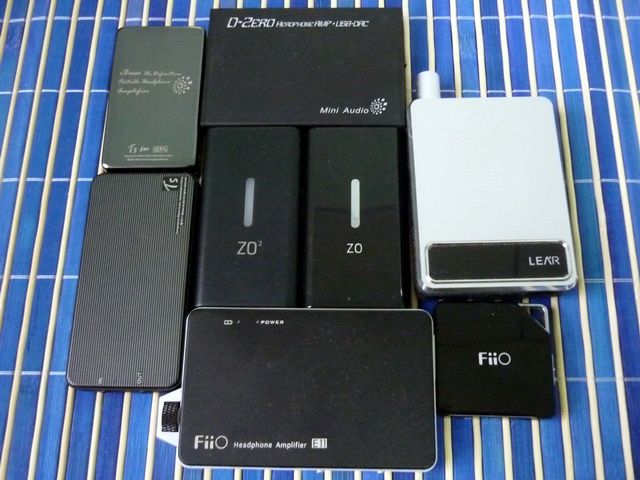
Size comparison: ZO / ZO2.3 next to iBasso T3D, T5, and D-zero, FiiO E6 and E11, and LEAR FSM-01
SQ + EQ
To put in bluntly – no, ZO2.3 isn’t the best portable amp you can buy for under $100. That is, if all you want is a portable amp with flat response and best transparency. To use it purely as an amp (low gain mode with level 0 bass contour, which has no bass boost at all), I’ll have to say ZO2.3 is right between an FiiO E6 and a JDS Labs cmoyBB (probably much closer to the later) and not nearly as good as FiiO E11. Why? Because like cmoyBB, ZO2.3 lacks good transparency as an amp. While cmoyBB adds lushness to the music, ZO2.3 has a sense of warmness in its background and actually rolls off at the bass end. However, the realistic question is ‘does anyone use ZO as amp only?’ I certainly hope not – that would be a big waste! The key is - ZO2.3 as a decent amp by itself, is neither the best nor the worst. But once you look pass ZO2.3 as an amp, it is really a marvel of its own. As far as my own opinion goes, ZO2.3, like the original ZO, is the miracle cure of poor bass response first, then an amp in second. Unlike most bass boost on portable amp that tends to add a bit of muddiness into the mix when it is over applied, the ZO2.3 with its SmartVektor has no such problem. Even on the max contour, the music retains its overall cleanness. This combines with the 32 steps of different bass contour has made ZO2.3 possible the best bass boosting amp you can have. Who cares about transparency when coloration is the name of the game?

ZO Level 1, 16 and 32 bass contour.
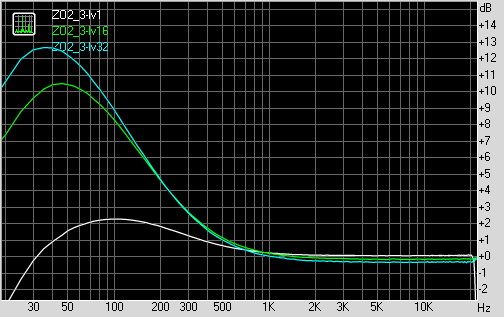
ZO2.3 (high gain) level 1, level 16 and level32.
One of ZO2.3’s improvements coming from the original ZO is the more refined ‘spacing’ between each bass contour. On the original ZO, most of the adjustment happens in lower contours, between level 1 to level 16 (in fact, between level 1 and level 8). With ZO2.3, though still has most of its contour under level 16, it has better spacing between each level so overall ‘tunablity’ has increased. Instead of having level 16 and beyond sounding too similar, now these contours are further apart and much more useful.
Verdict
I like the original ZO and I certainly like the ZO2.3 as well. While ZO2.3 takes care of most of ZO’s shortcomings, it does however introduce a few shortcomings of its own. Besides the hissing issue mentioned earlier, I also notice that ZO2.3 has less power output when compared to ZO. While still plenty for most headphone, it might come short for harder load. Beyond these issue however, I really find ZO2.3 as an out-of-the-box audio gadget that works brilliantly for what it is intended. I might have much better amp in my collection, but I know ZO2.3 is the one I’ll reach my hand to when I am craving for bass or just purely for fun. It is $99 fully justifiable bass deluxe!

Packaging is identical to the original ZO

Features
- Two gain modes for use with either headphone out or line-out
- Compatible with headphone impedances up to 300 ohms
- Digital volume control with 32 selectable levels
- LightScale with 32 distinct color changes for each sound contour profile
- Sound contour profiles tuned for equally spaced intensity changes
- Single-switch operation for all controls
- Memory feature automatically recalls last settings
- Dimensions: 2.75 x 1.5 x 0.38 in.
- Weight: 0.94 oz.
- Enclosure has a "soft-touch" protective coating
- Low power microcontroller for high-efficiency system management
- Low battery LED indicator
- USB-rechargeable Li-Polymer battery with rapid recharge time of 1 hour
- Playback time exceeding 12 hours
*Note: The reason to list features instead of spec is because there is no detail spec (on ZO or ZO2.3) being published.
Tech Prelude
As Arthur C. Clarke once said, ‘Any sufficiently advanced technology is indistinguishable from magic’ – perhaps a poor analog to describe how digiZoid’s SmartVektor works its ‘magic’, but nevertheless it is what a good number of user seem to have felt when turning on their ZO for the first time. At least, that’s how I felt when I used my ZO for the first time. Of course, I have since, in the course of the review process, got the chance to read the patent application behind the SmartVektor technology. I am no electronic engineer nor skilled in the art to really decipher all the information within, but I do understand part of its concept. Basically, at least to my understanding, ZO is like an adjustable active bass boost circuit. Well, not much to it, isn’t it? The key word here is ‘adjustable’. Most active bass boost design employ fixed band bass boost, meaning you can’t adjust the bass boost level or the frequency range affected. By implementing an digital controlled filter into their bass boost circuit, digiZoid is able to add multi layer of different bass boost level, and thus, adding the different ‘contours’ od frequency response into their bass boost circuit. While the concept of hardware based dynamic bass boost isn’t something of new as you can see them all over desktop and car amplifier, digiZoid is able to have a design that is small and practical enough to pack all the ‘magic’ of the SmartVektor technology inside. The really smart part of the SmartVektor technology, from my point of view, isn’t on the circuit itself, but the overall implementation. It works, and you can’t argue with that even if you don’t like bass boost yourself.

Build Quality and Accessories
The original ZO is quite decently built. It might not look as classy like an iBasso T series with its plastic housing and light weight, but the finishing is good and I have no complaint over it. The ZO2.3 uses the same design of housing, but comes with a matte rubber coating. Generally speaking I am not a fan of rubber coating as they tend not to last very long (as testament, the rubber coating on my newly acquired iBasso T5 started to come off on the first day). But surprisingly, the coating on ZO2.3 is rather well made and at least is able to resist my intentional finger scratching to a good degree. The matte finish and the added friction make ZO2.3 less toy like and more mature, to say the least. The LED based ‘LightScale’ that used to indicate volume and bass contours is also much brighter and vivid than the original ZO. On physical build alone, I have to say ZO2.3 indeed looks and feels better than the original ZO.
Accessories wise, there are two 3.5mm interconnecting cable and an USB cable for charging - nothing remarkable to speak of. I do wish digiZoid would pack a semi-large soft pouch as well. Not only it can used to store ZO when not in use, but also serves as a storage bag for ZO and its source (assuming a DAP of small size).

The LightScle on ZO2.3 looks much better than that on ZO.

Navigation
Everything is controlled by a single switch – from turning on / off, volume and bass contour adjustment to gain mode switching. I won’t say it is intuitive as it does take me a while and some manual reading to figure out all the functions.
As the actual control via the single switch is quite complex in itself, I won’t try to explain everything here. You just need to read the manual yourself when you received your ZO2.3. The thing that I’ll mention is the gain mode – ZO2.3 will remember your last selection so it is best not to connect your headphone to ZO2.3 before you turn it on. Instead, turn the amp on by itself and adjust everything to your liking before plugging the headphone in. This will avoid any sudden blast of volume if you are in the wrong gain mode or have the volume too high on last use. A good practice will be to avoid shutting the amp down with either volume too high or in the gain mode you generally don’t use.
I guess it is necessary to explain the important of gain mode. In high gain mode, ZO2.3 will behave like the original ZO and offer bass contour section but not volume. Basically you are expected to use the high gain mode with your source headphone-out and NOT line-out. All volume control is done by the source and ZO2.3 is there to give the bass kick. In low gain mode, ZO2.3 will function more like an amp with both volume control and bass contour selection. This is where you want to use a line-out signal.
Battery Life
The official spec quoted an over 12 hours of battery life. I haven’t really done a battery drain test on the ZO2.3 but overall I am able to pump over 10 hours of music out of a single charge. Of course, it really depends on what kind of bass contour as well as the gain mode and volume to determine how long battery will run for you. But overall the 12hours+ estimation is fairly accurate. Once the better is close to run dry, the LightScale bar will start to brink to remind you to recharge it.
Hissing + EMI
Hissing is perhaps the only area in ZO2.3 that gets worst coming from the original ZO. While the original ZO does hiss with some of my more hiss prone IEM (i.e SE530), it can be described as ‘mildly audible’ or ‘very faint’ when music isn’t playing. Once music is playing, it becomes mostly a nil issue. The hissing on ZO2.3 however has become more serious as it almost double the volume from the original ZO. While it is not enough to turn me away, it does mean some of my IEM, including a few that I don’t usually consider to be particularly hiss prone, have become annoying to listen with the ZO2.3 now because of the hissing. The only consolation is perhaps that most of the IEM I do use with amp, especially those high in impedance, are still ‘ZO friendly’. Regardless, this will be an issue for the next generation of ZO to fix.
EMI resistance is quite well in ZO2.3. I conducted my usual cellphone test on ZO2.3 and the result, while not totally silence, is well within the acceptable level. Only a very mild level of EMI noise pop up when I was making / receiving call.
On a side note that related to hissing and EMI - The click and pop performance are greatly improved from the original ZO. Now it is virtually silence when ZO2.3 is turned on or shut down.

Size comparison: ZO / ZO2.3 next to iBasso T3D, T5, and D-zero, FiiO E6 and E11, and LEAR FSM-01
SQ + EQ
To put in bluntly – no, ZO2.3 isn’t the best portable amp you can buy for under $100. That is, if all you want is a portable amp with flat response and best transparency. To use it purely as an amp (low gain mode with level 0 bass contour, which has no bass boost at all), I’ll have to say ZO2.3 is right between an FiiO E6 and a JDS Labs cmoyBB (probably much closer to the later) and not nearly as good as FiiO E11. Why? Because like cmoyBB, ZO2.3 lacks good transparency as an amp. While cmoyBB adds lushness to the music, ZO2.3 has a sense of warmness in its background and actually rolls off at the bass end. However, the realistic question is ‘does anyone use ZO as amp only?’ I certainly hope not – that would be a big waste! The key is - ZO2.3 as a decent amp by itself, is neither the best nor the worst. But once you look pass ZO2.3 as an amp, it is really a marvel of its own. As far as my own opinion goes, ZO2.3, like the original ZO, is the miracle cure of poor bass response first, then an amp in second. Unlike most bass boost on portable amp that tends to add a bit of muddiness into the mix when it is over applied, the ZO2.3 with its SmartVektor has no such problem. Even on the max contour, the music retains its overall cleanness. This combines with the 32 steps of different bass contour has made ZO2.3 possible the best bass boosting amp you can have. Who cares about transparency when coloration is the name of the game?

ZO Level 1, 16 and 32 bass contour.

ZO2.3 (high gain) level 1, level 16 and level32.
One of ZO2.3’s improvements coming from the original ZO is the more refined ‘spacing’ between each bass contour. On the original ZO, most of the adjustment happens in lower contours, between level 1 to level 16 (in fact, between level 1 and level 8). With ZO2.3, though still has most of its contour under level 16, it has better spacing between each level so overall ‘tunablity’ has increased. Instead of having level 16 and beyond sounding too similar, now these contours are further apart and much more useful.
Verdict
I like the original ZO and I certainly like the ZO2.3 as well. While ZO2.3 takes care of most of ZO’s shortcomings, it does however introduce a few shortcomings of its own. Besides the hissing issue mentioned earlier, I also notice that ZO2.3 has less power output when compared to ZO. While still plenty for most headphone, it might come short for harder load. Beyond these issue however, I really find ZO2.3 as an out-of-the-box audio gadget that works brilliantly for what it is intended. I might have much better amp in my collection, but I know ZO2.3 is the one I’ll reach my hand to when I am craving for bass or just purely for fun. It is $99 fully justifiable bass deluxe!